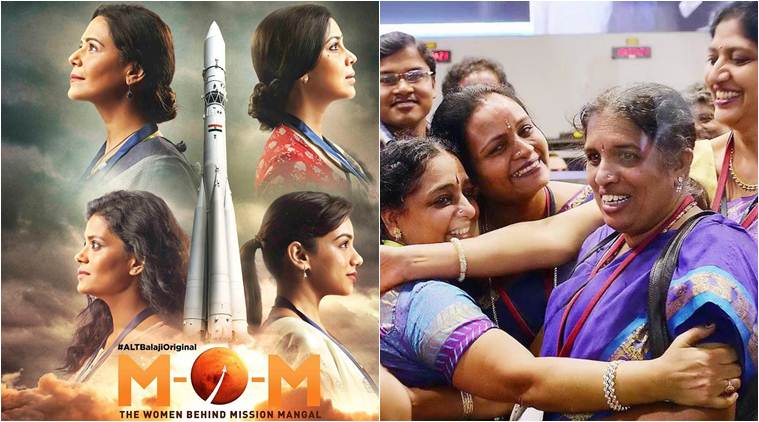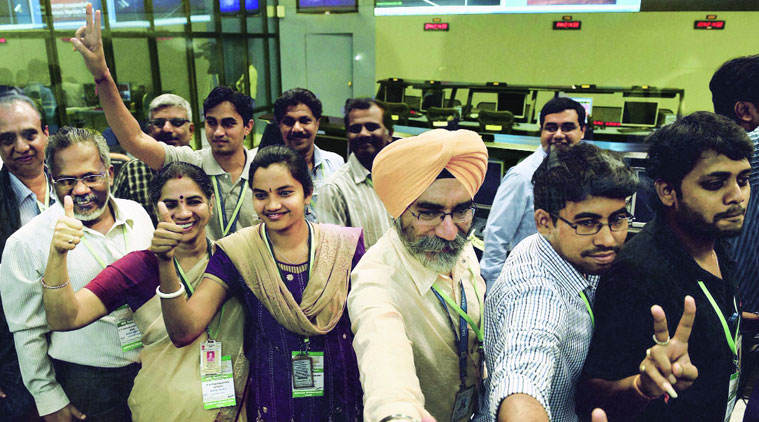Before ALTBalaji’s Mission Over Mars, meet the real women behind Mars Orbiter Mission
Before we get to know more about the women scientists behind Mars Orbiter Mission through the lens of M.O.M director Vinay Waikul, here is a look at the real-life heroes of Mangalyaan.

The Mars Orbiter Mission (MOM) or Mangalyaan recently inspired a Bollywood film Mission Mangal. Led by a stellar star cast including Akshay Kumar, Vidya Balan, Taapsee Pannu, Sonakshi Sinha, Kirti Kulhari, and Nithya Menen, the film offered a sneak peek into the lives of the scientists who put the satellite into the orbit around Mars.
Meanwhile, Ekta Kapoor also announced a web series, Mission Over Mars (M.O.M), on the same subject. Streaming on ALTBalaji from September 10, the series charts the journey of women scientists, played by Mona Singh, Sakshi Tanwar, Nidhi Singh and Palomi Ghoshi, who worked on the mission from inception to execution.
Before we get to know more about these women scientists through the lens of M.O.M director Vinay Waikul, here is a look at the real-life heroes of Mangalyaan. The short film Snapshots from Afar and the book Those Magnificent Women And Their Flying Machines: ISRO’s Mission on Mars by Minnie Vaid gave an insight into the lives of these women and their story comes across as not only motivating but also changes the perspective of men dominating the profession.
Vaid, in a series of interviews with several experienced ISRO women scientists, tried to find out the roles of the women in the project, if they were on an equal footing with their male counterparts, and if the latter were supportive.
“The women played integral roles, not subordinate to anyone. They were team leaders in their own right and expertise, assigned 100 per cent responsibility and accountability. And they delivered with the precision demanded by the mission. There were, of course, many women who played supportive roles in MOM. But in the major areas of the mission – – navigation, communication, control systems, spacecraft design and tracking—the women were leaders,” MOM project director S. Arunan said.
In an organisation where women scientists make up less than 20 per cent of the total scientific and technical workforce, the Mars mission saw women shouldering a fair share of the responsibility, according to Arunan. Tapan Misra, Director, SAC, said, “Women are the backbone of the organisation – they do the work yet remain invisible.”
The Mars Orbiter Mission allowed the country to see women scientists upfront for the first time, dispelling long-held stereotypes of the fuzzy-haired Einsteinian male scientist. “You know, we know Mars is for men. Now we have proved that Mars is not only for men,” joked S. Arunan.

“When we formulated a young team for MOM, the time given to us was just eighteen months. We needed the bubbling energy of the younger generation. We had a lot of problems that needed to be solved to complete the mission successfully. The women’s team had worked on Chandrayaan-1 and other challenging earth missions. MOM was a calculation-intensive mission. The navigation or mission aspects called for iteration [repetition of a mathematical procedure] calculation. Some of the women are very good in pure mathematics. Through all of our manoeuvres, designs and calculations, the women’s team stood by their decisions. Their accuracies were fabulous. I did not see them slipping even once in their calculations.”
Nandini Harinath, who handled mission operations at the UR Rao Satellite Centre (URSC), Bengaluru, in addition to calculating the spacecraft’s trajectory to Mars, remembers the suspense and the excitement at the time of the MOM team selection. She wondered whether it would be sanctioned at all and if the study team would translate into the project team. “The Prime Minister’s speech on 15 August confirmed that the project had been sanctioned. And then the rumours began, who would be the project director? Who would be part of the team? As speculation floated around, we are a big team of 3,000 people at the URSC—you keep hoping, but till you know, you don’t want to believe it,” Nandini said.
Nandini was asked to be one of the ‘focal points’ of the Mars mission. She recalled, “We weren’t designated, we were just told to start working on it from Day One. ‘Find out what others have done and do what you’re supposed to do’ those were the orders. And that started the mad race right from the first hour.”

Moumita Dutta, the 39-year-old project manager for the methane sensor of the MOM, said, “For one and a half years I had only Mars on my mind. Every day I would think of new test set-ups that I was developing: Will they work or not? Will they give me the desired performance? Will the instruments work? Then sourcing all the components, testing and integrating them, aligning them precisely, right down to the last micron.”
Minal Sampat, the project manager, systems integration, MOM, outlined her contributions in Minnie Vaid’s book, “Working in a soundproof, pressurized “clean room” without sunshine or any other external noise for days on end—often without a break during testing— was a challenge, but the payloads [scientific instruments onboard the spacecraft, see n. 20] are like my babies. I could not leave them.”
In Snapshots from Afar, a short film by Breakthrough, the women behind the Mars mission talked about it in detail.
In Snapshots from Afar, a short film by Breakthrough, the women behind the Mars mission talked about it in detail.



















No comments:
Post a Comment